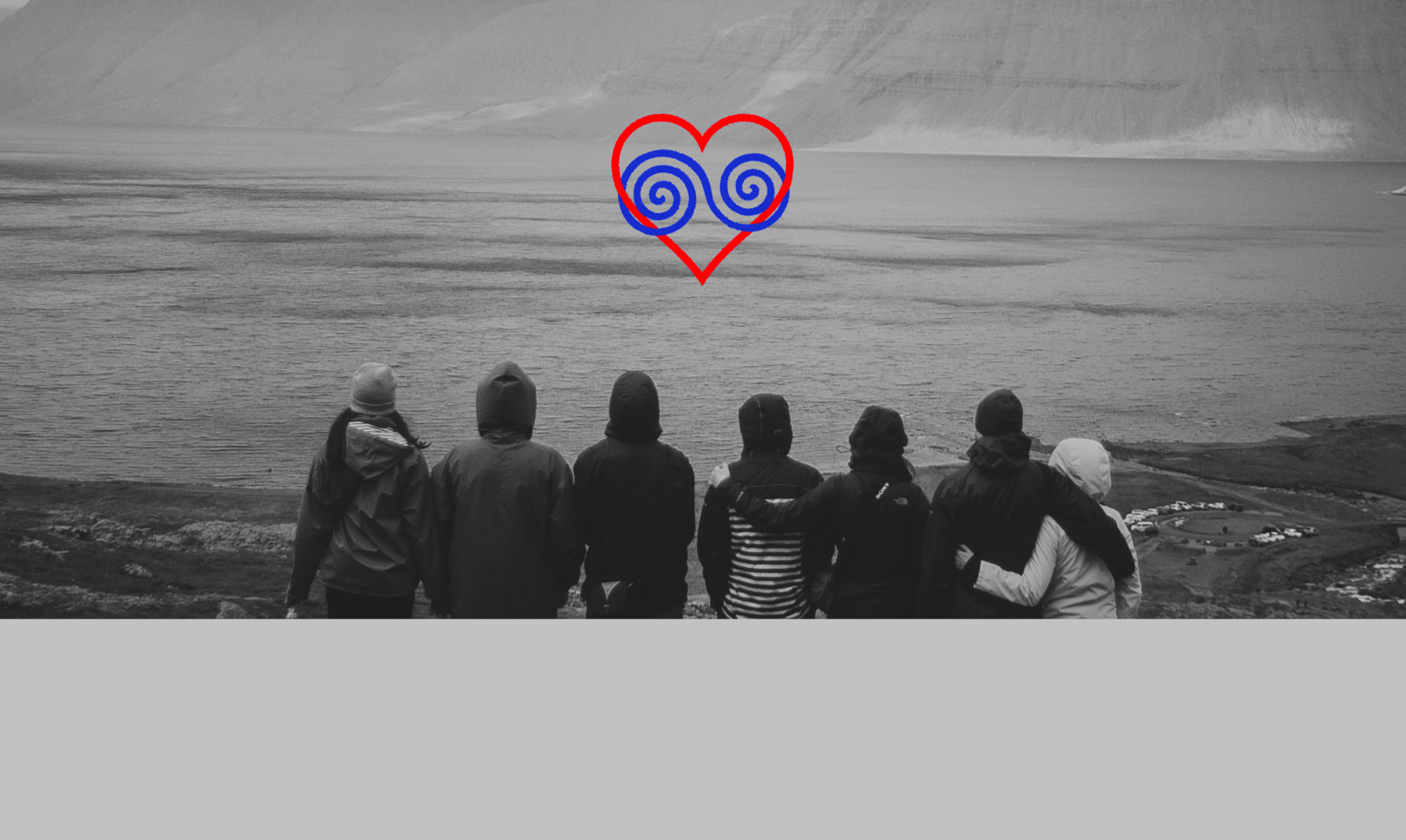The visit
Yesterday, for the first time, I received a visit to the remote island of Oligoamory, since I had landed here only three weeks ago myself. It was my friend from the versatile archipelago of Polyamory and I was accordingly excited.
Of course, I enthusiastically showed all the things I had encountered so far: We visited the place of my landing, I presented photos and maps on which the outlines of the island began to emerge, we looked at the rich flora and fauna of the island, whose promising potential of course I emphasised and naturally we went to the imposing “Oligoamorist’s Stone“.
However, when we sat in the evening on the porch of my hut with a cool drink, I noticed a significant irritation in my guest, of which I had the impression that it had gradually built up over the whole day.
Since I wanted to practice my honesty in the best sense of Oligoamory, I addressed my friend concerning it – and asked to respond just as sincerely.
“Now you have told me and shown me so much about this hidden new island,” began my interlocutor, “but the most important thing, it seems to me, you have left out. Where are these much-quoted inhabitants? Even you, my dear Oligotropos, live here with your nesting partner in your self-proclaimed research station – just the two of you – almost like a stuffy couple.”

“On the one hand, that bothers me a bit, of course,” I replied, “and naturally I would have liked to present you more in that regard. On the other hand, the current state is quite realistic.”
“How am I to understand that?” “Well – first of all, we are literally quite ‘off-beat’ here on the remote island of Oligoamory – it is very important that we realise that, especially in times when, at first sight, it seems that there is ‘nothing to be seen’. Already the legendary continent of ‘Open Relationships’ itself is actually rather distant from the currently still much larger ‘Old World of Monogamy’. About 15% of the population can imagine at present to lead non-monogamous relationships at best, and even that is not a large amount.
And then your own versatile archipelago of Polyamory – this pluralistic island chain, barely in the territorial waters of the ‘Open relationships’. It is said that there are just 2 to 3% of people on it now who call themselves truly ‘polyamorous’.
And from this archipelago, ‘Oligoamory’ is the last little known island – there are only very few people who have moved up to here, yet. I mean, the name almost says it all: I do not need to remind you that ‘oligo-‘ means ‘few’, and there are only a few who, in this respect, want to understand and share this relationship-philosophy and its way of life in a similar way. They have to find each other first! “
“But you yourself are now on this island …” my friend protested. “Ah yes,” I interrupted, “but only for three weeks. And that calls a very important oligoamorous factor into play … ” “Which is?”
“Time, of course,” I said. “And that’s why I perceive the symbol of Oligoamory, especially its double spiral, so distinctive: No relationship can be turned on like a switch and then it is immediately unfolded in the world. Relationships are budding, are being commenced, are evolving, growing (hopefully) together and are becoming deeper over a long period of time, thereby drawing circles and having repercussions. Quite apart from their own dynamic momentum and interaction concerning those parties involved, which I find in the spiral-symbol so pretty well met … “
“All right, we’re not on every corner, sometimes it’s difficult, I must admit,” said my opposite. “But the relationship initiation and management is probably nowhere any different – or is it?” “To that I’ll answer with a razor-sharp ‘as the case my be’ “,I said. “Unfortunately, we live in a world that tends to become more and more serial. The high divorce rates already suggest that. However, people do not automatically abandon this penchant for seriality when they enter the territory of open relationships or polyamorous ground, even if they find new tools for relationship management there. “
“And Oligoamory…”, my visitor started. “Is so far out and and so small that its inhabitants do not seek rapid interchangeability for reasons of sustainability alone. Or more precisely, as I wrote to you in my letter, in their quest to recognise each other as ‘whole people’ with all their strengths and weaknesses, they would rather not initiate parallel relationships due to purely situationally unfulfilled needs (or abandon them at whim). That would not fit in with their idea of time and finiteness: Relationships are more like plants to them, quasi organic. It is much more meaningful for all participants to be committed over a really long period of time in order to be able to shape them and make them prosper. In that regard, time always plays an important role in Oligoamory. To finally lead a multiple relationship under committed and sustainable criteria also means to approach them in a committing and sustainable way in the first place – and this takes time again.”
“But as for your splendid two-by-two togetherness here, my dear …” This time I interrupted immediately: “The few who are addressed by Oligoamory can also be just two,” I said. “Qualitative relationship management is good for everyone, no matter how many. In that case, I would even say that it would be really great if you had a good relationship with just yourself…” “Sounds like a ‘but’ will follow…” “Right, you already know that I agree with Scott Peck and Gerald Hüther there: To really get ahead, we need the others! Hüther, for example, wrote in his book ‘Who we are – and who we could become’ (2011): ‘So in order to evolve, you have to think in relationships and invest in relationship skills. That is the secret of the art of growing together and growing next to each other. However, this feat can only be achieved through the appreciation of each other as unique personalities, as a source of knowledge and experience, as well as through the introduction of a learning- and an error-culture in spirited togetherness.’ ”
“OK, I understand. Oligoamory concerns the few – and the little they start with needs time to evolve.
But how am I supposed to understand this stone that you showed me in that regard? That’s quite a monstrosity, don’t you think? What would one have to be for a superior being to fulfil all this? I can not imagine any living relationship anywhere that realises all the characteristics listed there!” my counterpart spoke more and more indignant. “Wait, wait!” I called. “You should neither overvalue nor underestimate the stone in this regard.” “What exactly do you mean by this?” “You have seen the stone yourself,” said I, “that is not exactly a pompous place of worship in which the Oligoamorists offer up their relationships performing dramatic rites. On the contrary, it is a remote, almost contemplative place.
From time to time, when an oligoamorous person feels the need for it, he, it or she adjourns to that private space to hold inner dialogue there. It’s usually about the person itself, for example, when they look at their connections in terms of values, whether their relationship still fulfils those things, whether everything is contained in good proportions, if perhaps something could be changed, and whether a time for communication and intercommunion with each other has come about – things like that.”
“Ah, I start to understand…” Incidentally, I do not view the values to be that superhumanly. Admittedly, because of the amount of icons and synonyms, it seems so overwhelming at first. In fact, they are organised around only five core areas, which I would call commitment, entitlement, honesty, identification and sustainability. In addition, the Oligoamorists have always emphasised the ‘human dimension’ a lot. In the sense that an ideal is important as a guiding star, always worth striving for – but for which you shouldn’t take any hostages in the achievement, not even yourself.
As far as I know, Gerald
Hüther had commented on that as well, wait a minute:
‘Once as
well as today people can only develop these potentials together. But
not in communities resembling ant-colonies, hordes or swarms, but in
individualistic communities where every single member matters, where
each individual can develop the special aptitudes he/she/it has in
him*her, and can contribute with his*her special abilities to the
unfolding of the potentials hidden in their communities.’
That
is a very nice idea for me with regard to Oligoamory. Individualistic
communities. This ensures that even the frequently invoked ‘values’
for the people involved are always individually accessible and
enriching in their content. Do you remember: The oligoamorous key
phrase was ‘justice of needs’ instead of ‘distributional justice’
“
“All right,” my friend admitted, “if you put it this way it sounds much warmer and closer to life. But I still have some concerns…” “So? Well then – open fire!”
You have already explained a lot about why ‘Polyamory’ was not distinguishing for you anymore and where you see the chances of ‘Oligoamory’. Nonetheless, at the same time you are relying on numerous achievements of Polyamory. But, it seems to me, you’ve thrown a lot overboard in that process. For example, what about those values that you have not yet mentioned, such as communication, trust, as well as freedom from control and possessiveness?”
“In fact, regarding that I really oppose” I stated, “because I do not think of those terms as ‘values’ as such.” “I beg your pardon?” “Yes, you heard that one right. In contrast to criteria such as e.g. transparency, consensus or equality, to which – despite gradual differences in interpretation – a somewhat coherent content is attributed, the same cannot be applied to ‘communication’, ‘trust’ or ‘freedom of control and possessiveness’ – since these descriptions contain a very wide range of behaviour which they depict. I do not want to dissect the individual points, because in my opinion they are not ‘fixed values’ but nonetheless important, ‘flexible variables’. And the four above mentioned terms can actually be covered by only two variables, both of which are also important to Oligoamory: communication and intimate nearness.”
“Please elaborate!” “Communication is a great example: Communication is important for every relationship. Without communication we would need mind-reading rubies that would have to be embedded in our foreheads if we were trying to figure out what might be alive in the other, as Marshal Rosenberg, the creator of Non-Violent Communication once said with a wink. By means of communication only I can express myself, by means of communication only I can experience the others. Correspondingly, there will be stormy times when presumably a lot of communication is required – and there may be harmonious times that might be managed with very little of it. ‘Communication’ is accordingly like a lever or a regulator on a scale. ‘Communication’ is a lot like a tool in that sense anyway, because it is all the more useful the more upscaled it is. That is why so many polyamorous and especially oligoamorous people are constantly practising mindful speech and even better hearing.”
“According to you ‘trust’ is such a ‘regulator’ as well?” “Exactly. If you say ‘possessiveness’ or ‘control’ or even in part ‘jealousy’, then at the root of all these manifestations hides in most cases a lack of (mutual) trust. Therefore ‘trust’ is clearly an adjustable ‘regulator’ because the behaviour of the participants, just as in communication, will have an impact on the point of the scale at which the parties concerned are arranged. Here the oligoamorous factor comes into play again…” “Oh no…!” “Oh yes – After all, trust (and good communication too, in fact) depends on time invested and spent together. I’ll probably have to introduce you to a very boring term here: ‘Predictability‘…” “Yikes!” “Jay, yikes – but ‘predictability’ is a very important thing to humans, especially if you consider the alternative.’ “ “Which might be…?” “‘Unpredictability’! And that’s what we humans – at least in our close-knit relationships can not stand well (and by the way it is proven to be extremely unhealthy in long term).” “Alright – but what does that have to do with our topic?”
“OK, listen carefully: “If ‘trust’ is to be established to serve the parties involved, so that possessiveness, control or jealousy will not become the winners at the relationship-table in the end, a certain amount of time has to pass so that the people involved can experience ‘predictability’ and ‘countability’. That’s exactly what it takes time for which I mentioned from the very start. And only when by means of a certain preliminary trust calculable intimate ‘nearness’ and ‘familiarity’ have emerged, a truly resilient relationship has been established. Needless to say that this will be no static result, but a process that must probably be visited again and again (which I already said about the ‘stone‘ as well…)…”
“Good,” my visitor audibly let out air. “But if that’s true, what you’ve told me about Oligoamory so far and featured about this island today, then the Oligoamory guidelines could be applied to any small group of people who feel ‘connected’ in any common sense. Even distance wouldn’t matter – and any common meaningful purpose would suffice as a basis. Oligoamory would then also be applicable e.g. to small aggregations of interest, clubs, flat-share-communities and the like. Even regarding close-knit groups that only know each other via the internet and whose only way to stay in touch is in that matter…”
“Generally, yes. But…” “I knew that there would be a ‘but’ this time, too…!” “But”, I laughed, “it’s not ‘Oligo-utility’ but ‘Oligo-amory‘. Now we have talked so long that you have lost almost the most important thing: We are talking about emotional, intimate relationships here, of people attached to each other in love!
From what I know so far, I would say: If all participants share a deep emotional bond, literally a community of conjoined companions or rather associates emerges, in which it is no longer significant or relevant whether its connections are underlined by physical intimacy or even sexuality. In such a group there would be room for e.g. the 80-year-old grandfather, as well as for asexual or disabled people, also for children of course, for people of all stripes, every gender, of every vocation or aptitude.
I would indeed go so far as to say that if this deep mutual emotional connection is shared and felt, it is possible to do so even over long distances, as long as it is supportive to all those involved in such a connection regarding their happiness to the highest possible extent.
But because of that I believe precisely that this is never representable regarding groups of unlimited size, but that all of it has to do justice to a assessable human dimension, as well as to the ‘common we’, which has to be still recognisable at all times.
In this respect, I leave the final word to Gerald Hüther again:
‘There is no freedom without attachment. But attachment is not dependence. We humans are able to shape our relationships so that we feel attached without being dependent. But to do so, we have to take care of the others, or at least be prepared to share what we have with them. Our food, our habitat, our attention, our strength, our knowledge, our ability, our experience.’
– and, I would like to add, our love.”
Thanks to Kyle Glenn on unsplash.com for the image of the Eco-Sphere





